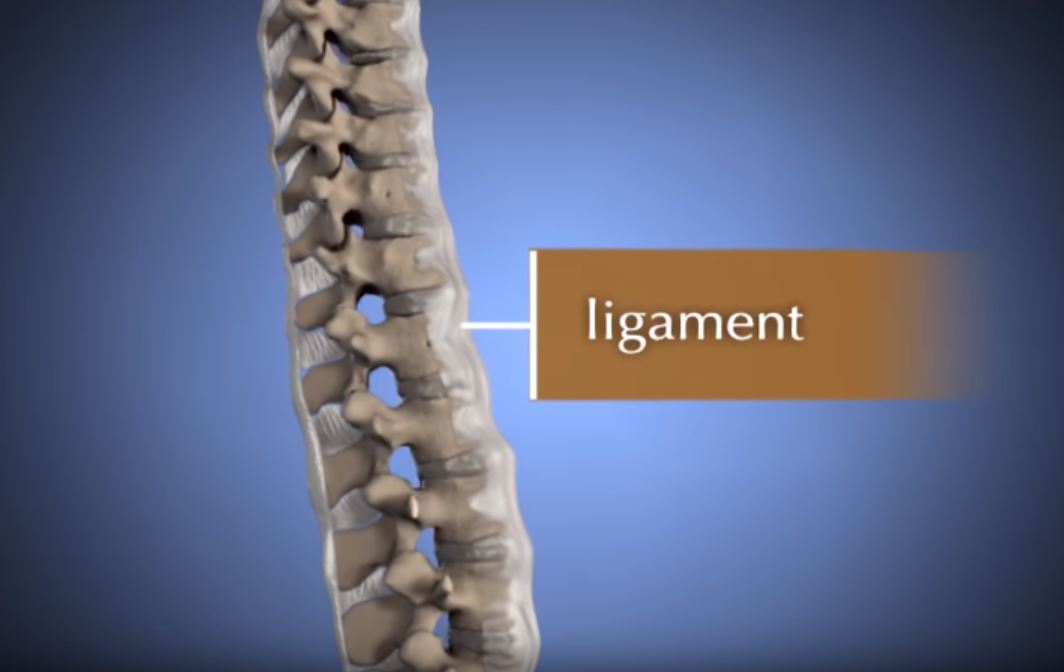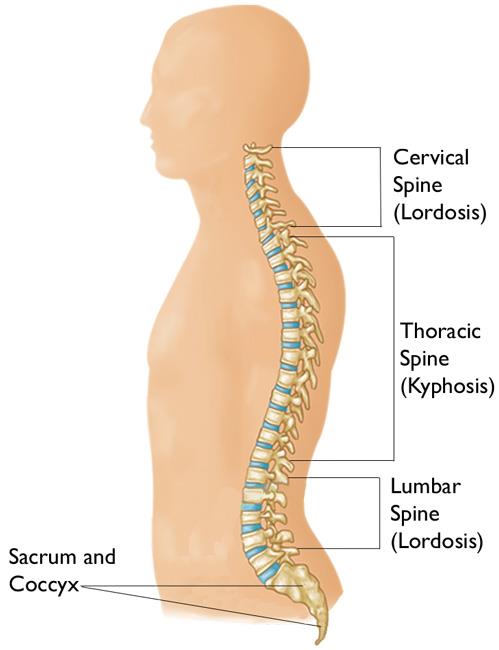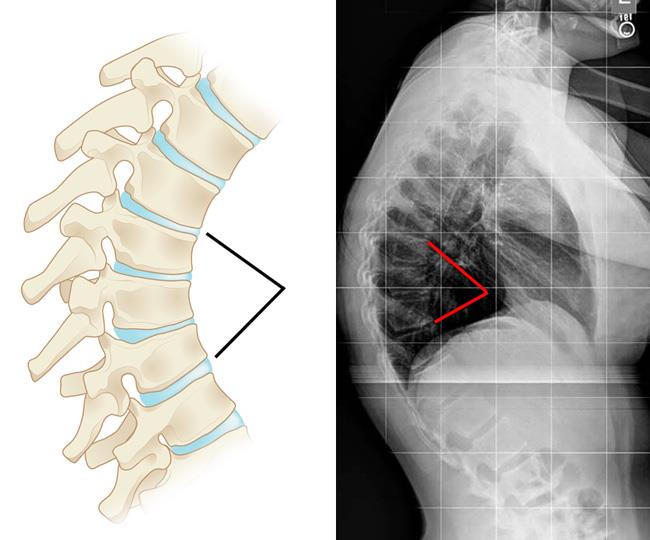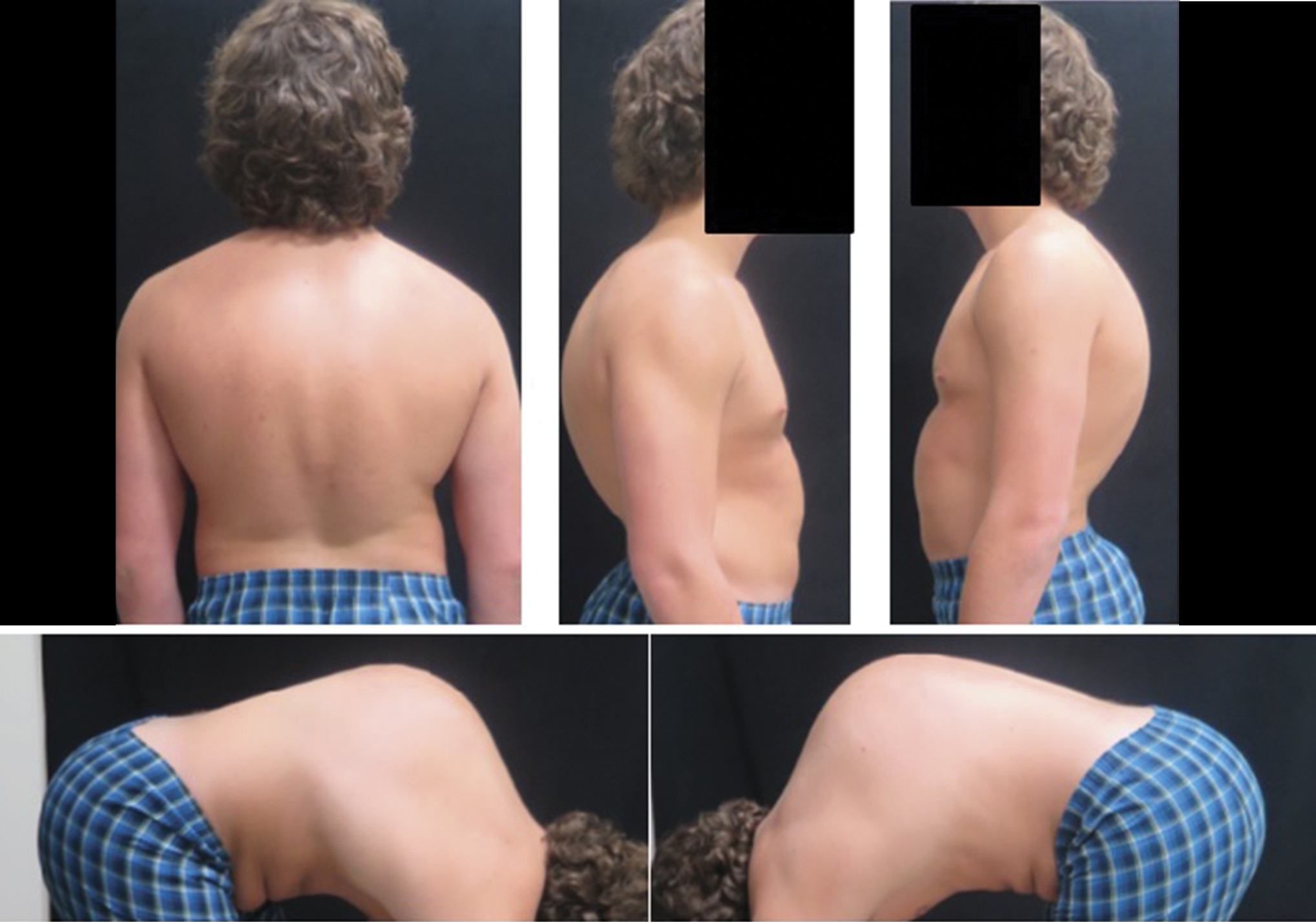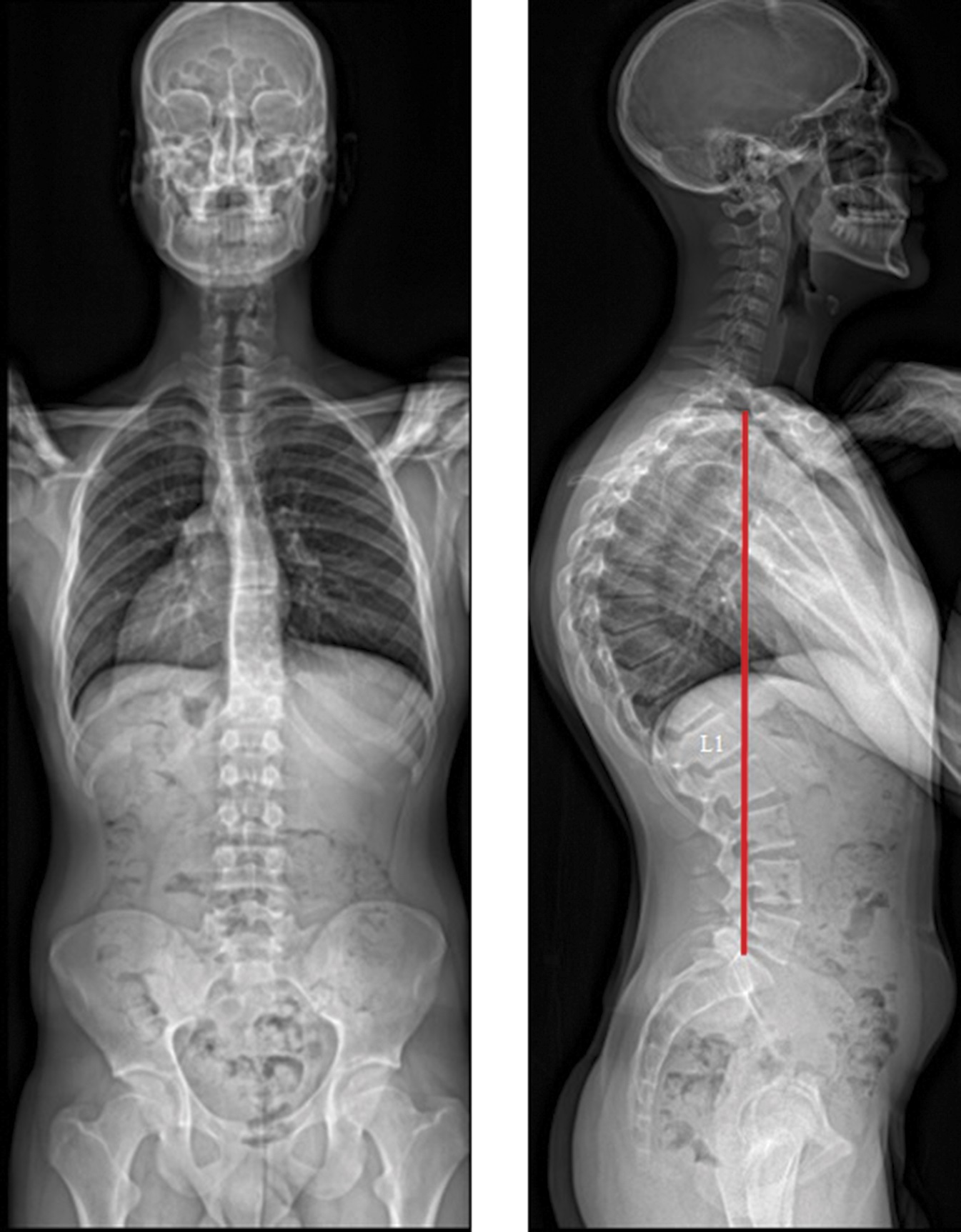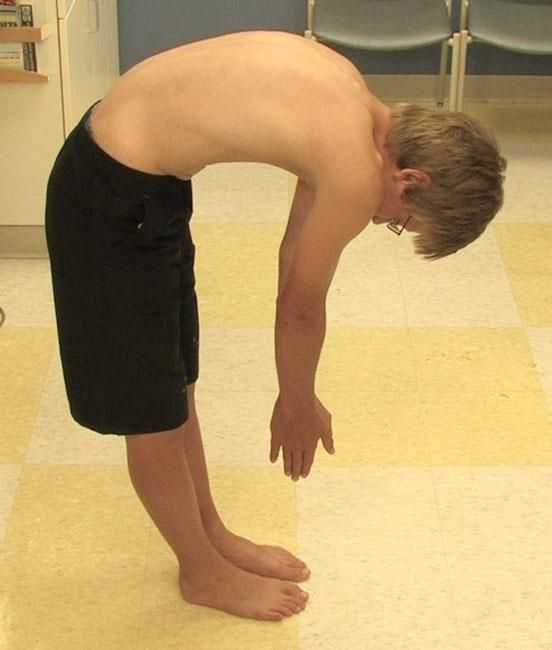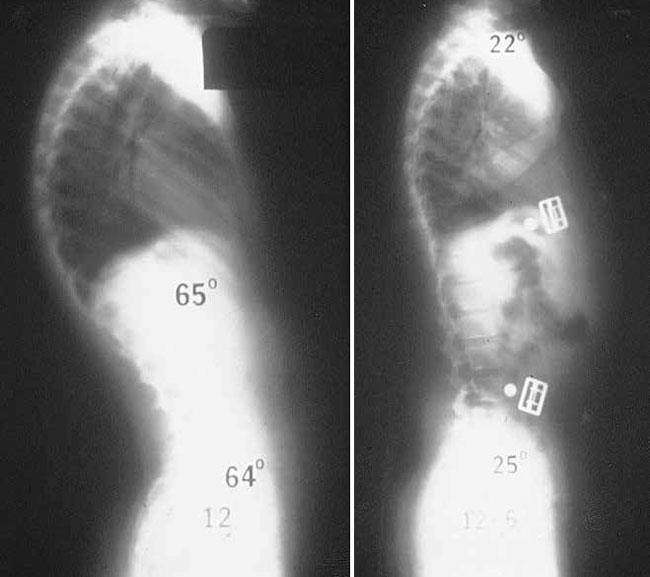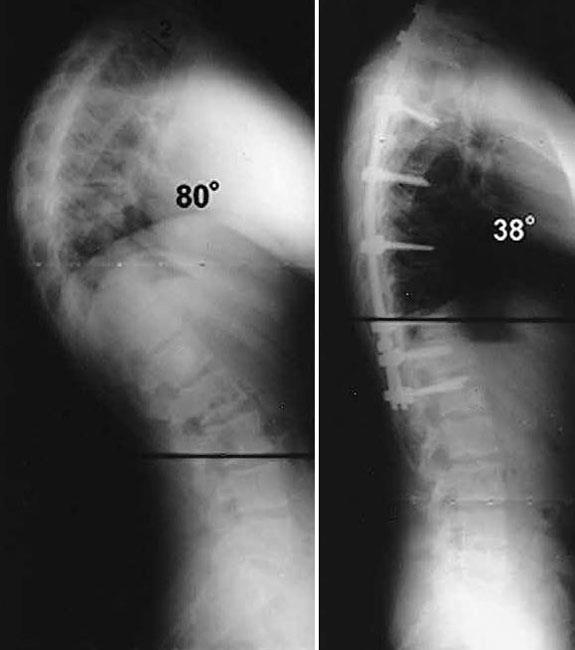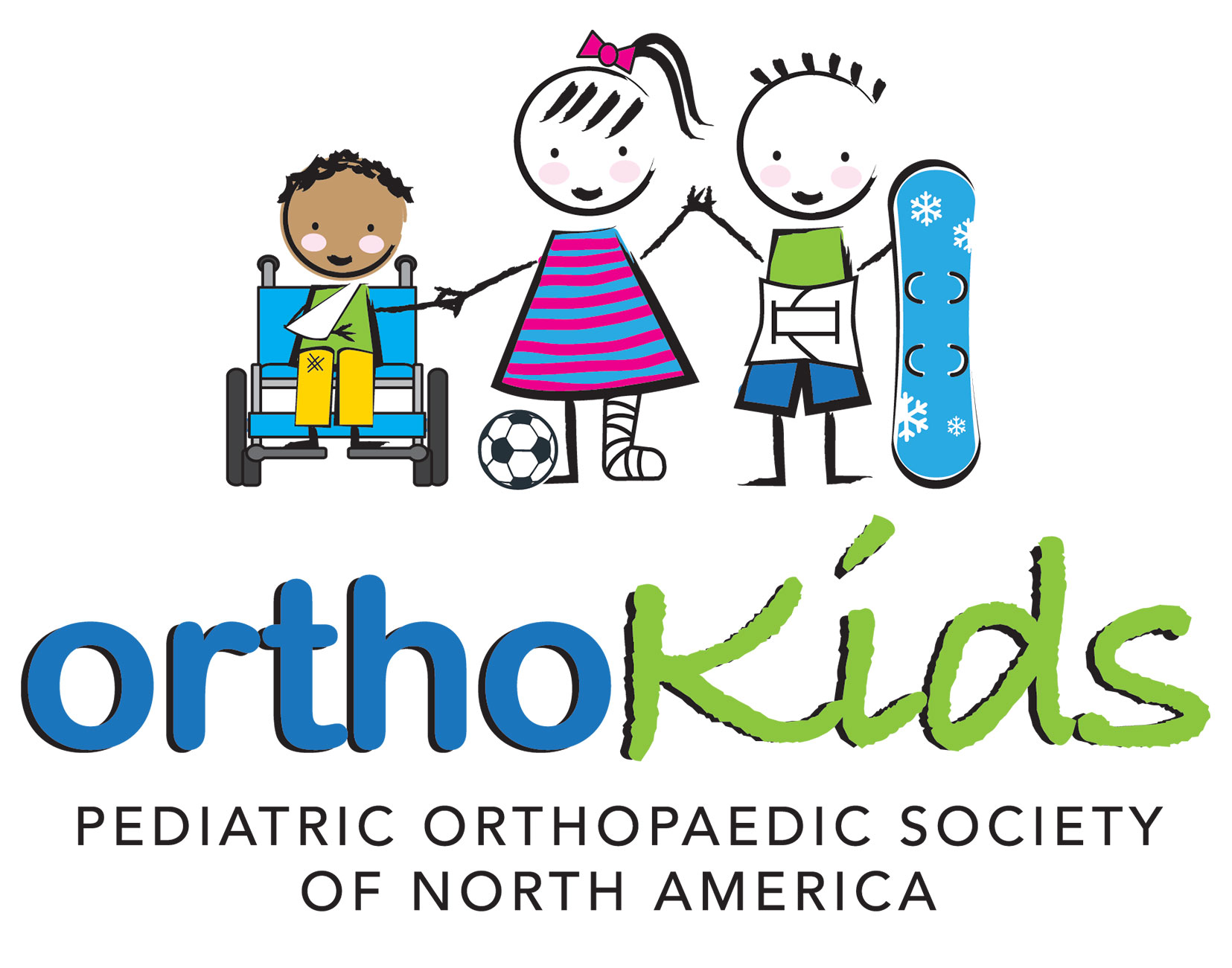Diseases & Conditions
Kyphosis (Roundback) of the Spine
Kyphosis is a spinal disorder in which an excessive curve of the spine results in an abnormal rounding of the upper back. The condition is sometimes known as roundback or — in the case of a severe curve — as hunchback. Kyphosis can occur at any age but is common during adolescence.
- In the majority of cases, kyphosis causes few problems and does not require treatment. Occasionally, a patient may need to wear a back brace or do exercises to improve their posture and strengthen the spine.
- In severe cases, however, kyphosis can be painful, cause significant spinal deformity, and lead to breathing problems. Patients with severe kyphosis may need surgery to help reduce the excessive spinal curve and improve their symptoms.
Anatomy
Your spine is made up of three segments. When viewed from the side, these segments form three natural curves.
- The C-shaped curves of the neck (cervical spine) and lower back (lumbar spine) are called lordosis.
- The reverse C-shaped curve of the chest (thoracic spine) is called kyphosis.
This natural curvature of the spine is important for balance and helps us to stand upright. If any one of the curves becomes too large or too small, it becomes difficult to stand up straight, and our posture appears abnormal.
The smaller segments of your spine include:
Vertebrae. The spine is typically made up of 24 small rectangular-shaped bones, called vertebrae, which are stacked on top of one another. These bones create the natural curves of your back and connect to create a canal that protects the spinal cord.
Intervertebral disks. In between the vertebrae are flexible intervertebral disks. They are flat and round and about a half-inch thick. Intervertebral disks cushion the vertebrae and act as shock absorbers when you walk or run.
Description
Although the thoracic spine should have a natural kyphosis of 20 to 45 degrees, postural or structural abnormalities can result in a curve that is outside this normal range. Although the medical term for a curve that is greater than normal (more than 50 degrees) is actually hyperkyphosis, the term kyphosis is commonly used by doctors to refer to the clinical condition of excessive curvature in the thoracic spine that leads to a rounded upper back.
Kyphosis can vary in severity. In general, the greater the curve, the more serious the condition.
- Milder curves may cause mild back pain or no symptoms at all.
- More severe curves can cause significant spinal deformity and result in a visible hump on the patient's back.
Types of Kyphosis
There are several types of kyphosis. The three that most commonly affect children and adolescents are:
- Postural kyphosis
- Scheuermann's kyphosis
- Congenital kyphosis
Postural Kyphosis
Postural kyphosis, the most common type of kyphosis, usually becomes noticeable during adolescence. It is noticed clinically as poor posture or slouching but is not associated with severe structural abnormalities of the spine.
The curve caused by postural kyphosis is typically round and smooth and can often be corrected by the patient when they are asked to stand up straight.
Postural kyphosis is more common in girls than boys. It is rarely painful, and, because the curve does not progress, it does not usually lead to problems in adult life.
Scheuermann's Kyphosis
Scheuermann's kyphosis is named after the Danish radiologist who first described the condition.
Like postural kyphosis, Scheuermann's kyphosis often becomes apparent during the teen years. However, Scheuermann's kyphosis can result in a more severe deformity than postural kyphosis.
Scheuermann's kyphosis is caused by a structural abnormality in the spine. In a patient with Scheuermann's kyphosis, an X-ray from the side will show that, rather than the normal rectangular shape, three or more consecutive vertebrae have a more triangular shape. This irregular shape causes the vertebrae to wedge together toward the front of the spine, decreasing the normal disk space and creating an exaggerated forward curvature in the upper back.
The curve caused by Scheuermann's kyphosis is usually sharp and angular. It is also stiff and rigid. Unlike a patient with postural kyphosis, a patient with Scheuermann's kyphosis is not able to correct the curve simply by standing up straight.
Scheuermann's kyphosis usually affects the thoracic spine but occasionally develops in the lumbar spine. The condition is more common in boys than girls and stops progressing once growing is complete.
Scheuermann's kyphosis can sometimes be painful.
- If pain is present, it is commonly felt at the most prominent part, or apex, of the curve.
- The patient may also feel pain in the lower back. This can happen when the spine tries to compensate for the rounded upper back by increasing the natural inward curve of the lower back.
- Activity can make the pain worse, as can long periods of standing or sitting.
Congenital Kyphosis
Congenital kyphosis is present at birth. It occurs when the spinal column fails to develop normally while the baby is in the womb. The bones may not form as they should, or several vertebrae may be fused together. Congenital kyphosis typically worsens as the child ages.
Patients with congenital kyphosis often need surgical treatment at a very young age to stop progression of the curve. Many times, these patients will have additional birth defects that impact other parts of the body, such as the heart and kidneys.
Symptoms
The signs and symptoms of kyphosis vary, depending upon the cause and severity of the curve. These may include:
- Rounded shoulders
- A visible hump on the back
- Mild back pain
- Fatigue
- Spine stiffness
- Tight hamstrings (the muscles in the back of the thigh)
Rarely, over time, progressive curves may lead to:
- Weakness, numbness, or tingling in the legs
- Loss of sensation
- Changes in bowel or bladder habits
- Shortness of breath or other breathing difficulties
Doctor Examination
Mild kyphosis often goes unnoticed until a scoliosis screening at school prompts a visit to the doctor. If changes to the patient's back are noticeable, however, it is usually quite troubling for both the parents and the child. Concern about the cosmetic appearance of the child's back is often what leads the family to seek medical help.
Physical Examination
Your child's doctor will begin by taking a medical history and asking about your child's general health and symptoms. They will then examine your child's back, pressing on the spine to determine if there are any areas of tenderness.
During the exam, the doctor will ask your child to bend forward with both feet together, knees straight, and arms hanging free. This test, which is called the Adams Forward Bend Test, enables your doctor to better see the slope of the spine and observe any spinal deformity.
The doctor may also ask your child to lie down to see if this straightens the curve — a sign that the curve is flexible and may be representative of postural kyphosis.
Tests
X-rays. X-rays provide images of dense structures, such as bone. Your child's doctor may order X-rays from different angles to determine if there are changes in the vertebrae or any other bony abnormalities.
X-rays will also help measure the degree of the kyphotic curve. A curve that is greater than 50 degrees is considered abnormal; however, it does not necessarily indicate the need for invasive treatments.
Pulmonary function tests. If the curve is severe, the doctor may order pulmonary function tests. These tests will help determine if your child's breathing is restricted because of diminished chest space.
Other tests. In patients with congenital kyphosis, progressive curves may lead to symptoms of spinal cord compression, including pain, tingling, numbness, or weakness in the lower body. If your child is experiencing any of these symptoms, or if the curve changes quickly over time, your child's doctor may order neurologic tests or a magnetic resonance imaging (MRI) scan.
Treatment
The goal of treatment is to stop progression of the curve and prevent deformity. Your child's doctor will consider several things when determining treatment for kyphosis, including:
- Your child's age and overall health
- The number of remaining growing years
- The type of kyphosis
- The severity of the curve
Nonsurgical Treatment
Nonsurgical treatment is recommended for:
- Patients with postural kyphosis
- Patients with Scheuermann's kyphosis who have curves of less than 70 to 75 degrees
Nonsurgical treatment may include:
Observation. The doctor may recommend simply monitoring the curve to make sure it does not get worse. Your child may be asked to return for periodic visits and X-rays until they are fully grown.
Unless the curve gets worse or becomes painful, your child may not need any other treatment.
Physical therapy. Specific exercises can help relieve back pain and improve posture by strengthening muscles in the abdomen and back. Certain exercises can also help stretch tight hamstrings and strengthen areas of the body that may be impacted by misalignment of the spine.
Nonsteroidal anti-inflammatory drugs (NSAIDs). NSAIDs, including aspirin, ibuprofen, and naproxen, can help relieve back pain.
Bracing. Bracing may be recommended for patients with Scheuermann's kyphosis who are still growing. The specific type of brace and the number of hours per day it should be worn will depend on the severity of the curve. The doctor will adjust the brace regularly as the curve improves. Typically, the child wears the brace until they reach skeletal maturity and are finished growing.
Surgical Treatment
- Surgery is often recommended for patients with congenital kyphosis.
- Surgery may also be recommended for patients with Scheuermann's kyphosis who have curves greater than 70 to 75 degrees or those with severe back pain.
- Patients with kyphosis in the lower back (thoracolumbar curves) may require surgery for smaller curves of greater than 25 to 30 degrees.
Spinal fusion is the surgical procedure most commonly used to treat kyphosis.
The goals of spinal fusion are to:
- Reduce the degree of the curve
- Prevent further curve progression
- Maintain the improvement over time
- Relieve significant back pain, if it is present
Surgical Procedure
Spinal fusion is essentially a welding process. The basic idea is to fuse together the affected vertebrae so that they heal into a single, solid bone. Fusing the vertebrae will reduce the degree of the curve and, because it eliminates motion between the affected vertebrae, may also help to relieve back pain.
During the procedure:
- The doctor will typically use metal screws and rods to help position the vertebrae in better alignment. Often, the goal is for safe partial correction — making the curve smaller but not always making it normal. Ideally, the curve will be reduced by 50% of its initial magnitude.
- Once the vertebrae are better aligned, the doctor places small pieces of bone — called bone grafts — into the spaces between the vertebrae to be fused. Over time, the bones grow together, similar to how a broken bone heals.
Exactly how much of the spine is fused depends upon the size of your child's curve. Only the curved vertebrae are fused together. The other bones in the spine can still move and assist with bending, straightening, and rotation. Larger curves often require more vertebrae to be fused, which means that fewer mobile vertebrae remain to allow spine bending and twisting.
Long-Term Outcomes
If kyphosis is diagnosed early, many patients can be treated successfully without surgery and go on to lead active, healthy lives. However, curve progression could potentially lead to problems during adulthood. Patients with kyphosis need regular doctor's visits to monitor the condition and check progression of the curve, whether or not it is treated with surgery.
Contributed and/or Updated by
Peer-Reviewed by
AAOS does not endorse any treatments, procedures, products, or physicians referenced herein. This information is provided as an educational service and is not intended to serve as medical advice. Anyone seeking specific orthopaedic advice or assistance should consult his or her orthopaedic surgeon, or locate one in your area through the AAOS Find an Orthopaedist program on this website.







